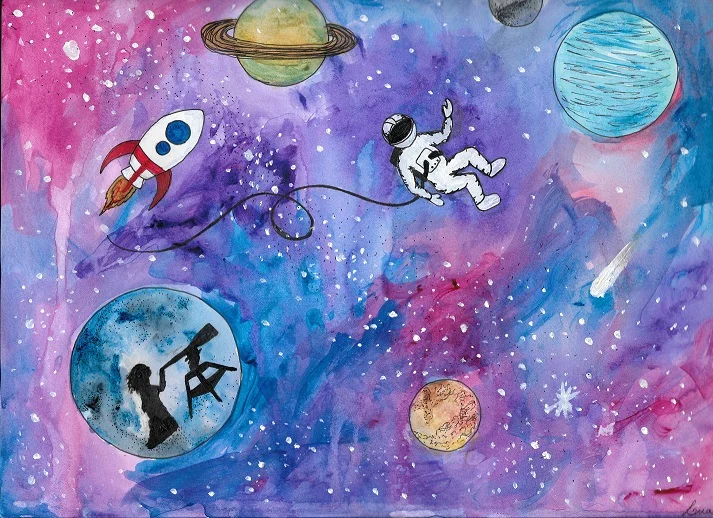
During the height of the Space Race, in 1957, the Soviet Union did something extremely unusual — they sent a dog up to orbit the Earth. Unfortunately, this astro-dog trip on the spacecraft Sputnik 2 was purposefully designed to be a one-way trip.
Researchers are still not sure how long Laika the Siberian Husky mix spent orbiting our blue marble before her life support system ran out of power.
While Laika was the first animal to achieve an earthly orbit, she certainly wasn’t the last. She sparked many more space missions involving all sorts of animals, ranging from worms all the way to guinea pigs.
Other furry celebrities include monkeys Able and Baker who flew up 483 kilometres before returning safely, dogs Veterok and Ugolyok who orbited the earth for a staggering twenty-two days and Felix the French cat who was the first of his species to fly beyond the bounds of earth.
While the image of a cat, dog or monkey astronaut is unfathomably adorable it brings into question: what was the point?
Scientists are smart, but no human can see into the future. Sending these animals to space was a means of testing whether it would be safe for humans to endure the added acceleration, elevation and drastically reduced gravity that’s associated with space travel.
Researchers used a variety of animals as guinea pigs (pun intended) to make sure our astronauts would be okay. Measurements were taken from the animals to investigate the effect of microgravity on behavioural performance, metabolic state and tissue development.
While they weren’t as cute as our furry friends Laika, Veterok or Felix, the Soviet Space Program sent up a small group of ten newts in 1985 onto one of their biosatellites — the Bion 7 — after amputating their front legs.
These poor creatures may have been armless for a little while, but these newts have the ability to regenerate limbs after amputation. The salamanders allowed the Soviet Space Program to further understand how their cosmonauts would recover after sustaining injuries.
Sending animals to space isn’t just a strange experiment of the past — we continue to study what happens in different scenarios for different animals. A few student-designed experiments involving animals have made it onto the International Space Station.
A recent experiment involved exposing tardigrades to open space. Adorably referred to as “water bears” or “moss piglets,” they are incredibly resilient micro-animals known for surviving in some of the most extreme environments including mud volcanoes and the coldest parts of the Antarctic.
For ten likely uncomfortable days, these tiny water bears were washed over with cosmic rays and freezing temperatures all the while experiencing intense dehydration and an almost pure vacuum. After their ten day stay at possibly the worst hotel in the entire universe, the moss piglets were rehydrated.
What these tardigrades endured certainly makes me feel bad for complaining about rainy Vancouver weather.
So, if you’ve had your heart set on space travel but you don't know if you quite have what it takes, perhaps you should look into becoming some sort of animal. Don’t expect the most pleasant experience once you get up there though.
Brittany Crooks is a third-year physics major and the UBC Astronomy Club’s Academic Coordinator.

